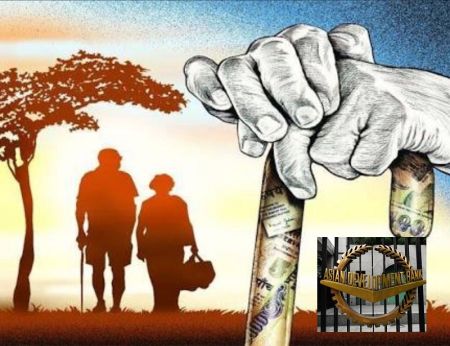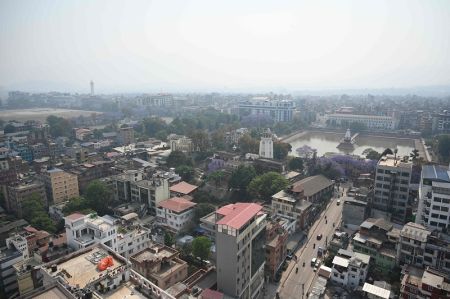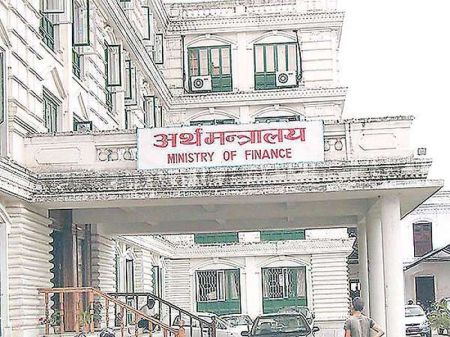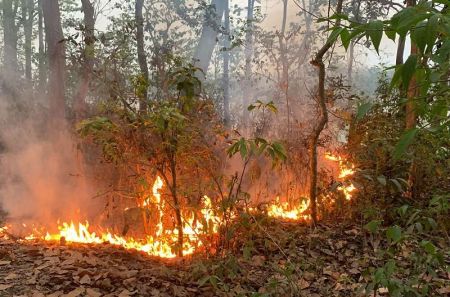
--By New Business Age Team
What are the elements that shape the country’s transition from volatile politics to stable democracy? All too often, policy analysts focus on the political process, while neglecting the vital role of economic reform in determining democratic success or failure.
In the last decade, high unemployment and lack of entrepreneurial opportunities posed serious challenges to Nepal’s transition. On the other hand, the country faced growing unresolved grievances caused by issues such as misappropriation of private property, rampant corruption and widening inequality.
Yet, there is silver lining. Despite a decade-long political turmoil and armed conflict, the country’s economy was successful enough to maintain its basic economic indicators in a positive direction. It is for sure that the country will go through a long and complex journey before the current political transition will settle to form a stable democracy. The question remains as to how to unleash economic prosperity in the current situation.
Many believe that the country can achieve prosperity if elections are held on time as political parties will agree on a common economic agenda to take the country into a prosperous future.
The government on July 14 announced the annual budget of Rs 517.24 billion for the Fiscal Year 2013-14 through an ordinance. This is the first time in two years that a government budget has been announced for the entire fiscal year before the fiscal year begins. The budget of the current fiscal year gives special emphasis on elections to the Constituent Assembly by earmarking Rs 16 billion to hold the CA election. The budget has also emphasised on sustainable development along with economic growth and stability.
The government is heading towards a dream of achieving the status of a ‘developing country’ by 2022 through a three-year plan. Many suspect whether the Nepali economy can begin the journey of prosperity in the given circumstances. The experience of the last decade, however, shows that the country can achieve things if the CA election is held on time and if political parties are united on a common economic agenda.
Despite political instability, Nepal has witnessed a noticeable growth in all sectors during the last decade. In recent years, many banks and money transfer businesses have grown. Nepal was one of the highest receivers of remittance on the basis of the Gross Domestic Product (GDP) in 2011.
Between 1980-2012, Nepal’s Human Development Index (HDI) rose by 3.8 percent annually from 0.234 to 0.463 today, which ranks the country 157 out of 187 countries with comparable data.
Nepal is one of the 189 countries committed to the Millennium Development Goals (MDGs), a pledge renewed in its three year plan (2010-2013). The data from MDG progress report for Nepal 2010 prepared in partnership between the government of Nepal and the UN country team indicates that Nepal may be able to achieve most of its MDG targets by 2015.
There are noticeable improvements in other economic indicators too. The national poverty line has gone down to 25 percent, net enrollment rate has increased to 93.7 percent, under five mortality has reduced to 50 per 1000 live births and maternal mortality has reduced to 229 per 100,000 live births which is almost reduction by half in 10 years’ time.
Be it the health and education sector or the manufacturing and industrial sector, the country has succeeded to achieve remarkable progress despite political instability during the last decade.
Improvements in health services have resulted in a decline in the mortality rate. The declining mortality rate coupled with high fertility rate has resulted in rapid population growth. Control of malaria and other epidemics and the expansion of medical and public health facilities also reduce morbidity and mortality in the country. School enrollments of both boys and girls at all levels have increased.
There are rays of hope also in the hydropower sector too. Currently a power deficit country will be a power surplus one by 2018 if all ongoing projects will be completed within a stipulated time.
Around a dozen of hydropower projects including 556 MW Upper Tamakoshi, 50 MW Upper Marsyngdi, 60 MW Trishuli 3A and 42 MW Upper Modi along with others are under construction. These projects are supposed to end existing massive power outage problem and lead the country into the era of industrialisation.
During the conflict era, the tourism sector suffered a lot resulting in the closure of some renowned five-star hotels. The conflict also tarnished the image of the country in the global scene. However, the entire tourism sector has started to revive now and it is certainly no surprise that hotels have mushroomed in recent years. As the number of tourists and foreign business travelers in Nepal are growing in step with its economy, Nepal’s rapidly maturing hotel industry is one of the key beneficiaries. The tourism sector has given much to the Nepali business community to cheer.
The total contribution of the travel and tourism sector to the GDP stood at RS. 119.1 billion in 2011, according to the World Travel and Tourism Council and was forecasted to rise by 4.8 percent in 2012 and by 4.1 percent per annum to NRP 185.5 by 2022.
Some of the road construction projects that are under the works raise hope in the realm of infrastructure development. Tripura Sundari to Satbanjha (25 km), Satbhanja to Gokuleshwar (54 km), Khodpe to Kalinga Bridge, Chainpur (62 km) are some major projects to connect rural Nepal by road access.
These projects would lead to a 6 percent increase in the number of people with all-season road access and a 35 percent decrease in travel time.
Educating and uplifting the status of the vulnerable and marginalised children, women empowerment through community-based livelihood enhancement projects is a tool to leap forward. Programmes of integrated rural development and nature conservation in the mountain region of Chitwan district is worth mentioning for steady rural reconstruction in Nepal.
Not only the telecom sector but also the entire Information and Communication Technology (ICT) sector has been witnessing a remarkable growth after the political revolution in 1990. Both growth and expansion of the ICT sector has lured many brands and companies to invest in the country. The monopoly of the state-owned Nepal Telecom has ended and many players have emerged in the telecom and ICT business.
Today, all districts of the country have telecom facilities and consumers are using state-of-art technology and sophisticated devices to prove themselves tech-savvy. The government and private sectors are mulling to utilise ICT to boost the economy by using its maximum potential to promote all sectors.
In recent years, the agricultural sector has also gained attention from the government as well as the private sector. The government’s plan to modernise agriculture, ease the distribution of chemical fertilizers, step up the construction of irrigation projects would at least decrease the country’s dependency on import for the agro-products, making the country self-reliant.
Green Kathmandu, Clean Bagmati campaign will lift the face of the river flowing through the capital. The Melamchi Drinking Water Project will solve the problem of acute shortage of water in the Kathmandu valley.
It is always said that the youth are not just leaders of tomorrow but partners of today.
The population of youth between the age of 15 and 29 is 6.131 million in Nepal. This accounts for 26.5 percent of the total population. Consolidating youth for prosperous development should be the main responsibility of the state, private sectors, and civil society.
The nation should take advantage of young talent and energy, simultaneously solving problems of violence, instability and abusive behaviour. Considering these facts, it is necessary to invest energy and capacity embodied in the youngsters in a constructive way for the development of our country by making the rural youth competent and responsible.
Since we are going through a post conflict period, the state machinery should not neglect this mass. The government should come up with a plan to engage these large numbers of youth in creative and entrepreneurial ventures. This is the need of hour of our country. Also, it is the only way to enhance our youth with their energy and efforts.
In a country like Nepal, real development Let us dream together that one day the rural youth of Nepal will be able to lead not only the development process but also play a vital role in the economic, cultural and political sectors.
As in an essay by noted litterateur Laxmi Prasad Devkota entitled ‘Is Nepal Insignificant?’ where he eloquently writes about the prospects of Nepal, this country has tremendous potential for economic growth. But all we need to boost the country’s economy are commitment from the political leadership, positive thinking of the general public and sincere and genuine efforts from the private sector.





















